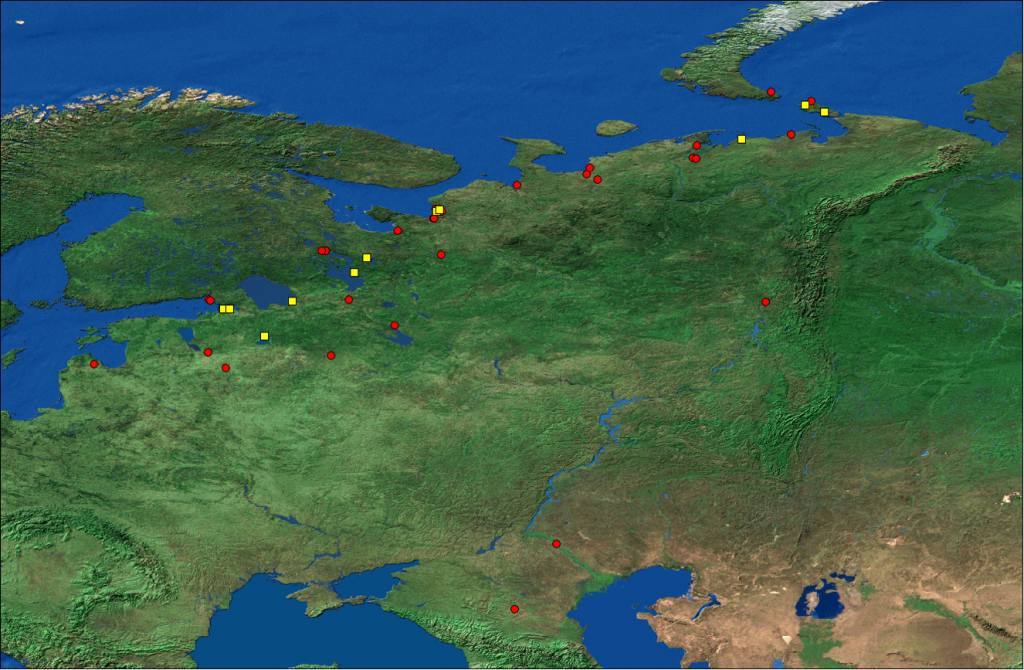The sudden apparition of Bewick’s Swans in the Evros Delta is puzzling. It is quite a rare event to see a species colonizing a new area so quickly and in such a number. Because we are curious and want to be sure that their future in the area – and beyond – will be preserved, it raises some essential questions:
From where are they coming from, in other words what’s their breeding origin ?
What factor(s) made(s) possible that they have arrived up to the Evros Delta ? Do they were forced to leave from another place ?
What route(s) did they follow to reach Greece ?
What characteristic(s) of the Evros Delta made(s) possible for thousands of Bewick’s Swans to spend safely the winter in Greece ? Are these characteristics adequately integrated in the management plan of the Evros Delta National Park? We need to be sure that the swans will benefit of the ideal condition for many more years.
Let’s begin by the beginning… The migration route.
What do we know already ? We have 2 sources of information: the observation of migrating Bewick’s Swans and the results of ringing. No way concerning the observations, the max number of Bewick’s Swan seen simultaneously in Romania is probably 100, the same for Bulgaria and almost 300 for Ukraine. It seems improbable that thousands of migrating swans have escaped the attention of local ornithologists. But it is not impossible because it is known that Bewick’s Swan are able to fly non-stop up to 2000 km.
Checking the ring recovery database of the Bird Ringing Centre of Russia gives some information regarding a route to Greece.


The data show a strong migration route from the breeding grounds in the tundra of western Siberia to the direction of the well-known wintering grounds situated mainly on the southern North Sea area. The Russian database reports also some movements to the south south-east with one ring recovery in the area of Perm on the west of Ural then another along the Volga between Volgograd and Astrakhan and a third to the Kraï of Stavropol at equidistance between the Caspian and Black Sea. This last location is situated 1400 km east of the Evros Delta.
Further to these finding of dead swans, three visual sightings of marked Bewick’s Swans were made so far during the surveys conducted in the Evros Delta. It concerns swans that were fitted with a coloured neck collar engraved with an unique code allowing individual identification at distance. The first sighting dated 04/02/1997 and concern thus one of the very few Bewick’s observed in the Evros Delta. It was ringed at 3558 km distance in the Pechora delta on 15/08/1992 (see blog 23/11/2015). A second Bewick’s Swan with a neck collar was observed also on Paloukia Lagoon on 06/12/1998. It was ringed by Dutch ornithologists on 27/11/1994 in the Flevoland Polder in the central Netherlands. The distance between both locations is 2004 km. The last neck-collared Swan observed in the Evros Delta was also marked in the Netherlands, in Wieringermeer on 16/12/2006. It was seen in Greece on 18/02/2010.

But very interestingly it was observed earlier in the same winter along the Baltic Sea by the celebrated swan’s specialist of Latvia Dmitrijs Boiko. That particular Bewick’s Swan was thus going to Greece throughout Eastern Europe. Notably that same swan was wintering previously in Welney, Norfolk (United-Kingdom). It was back in the same place the next winter after having visited the Evros Delta, then it was seen the next winter in The Netherlands. It indicates that at least some Bewick’s Swans are able to change regularly of wintering ground.
All these data leads us to one conclusion: we have to investigate further the migration route of the Bewick Swan’s wintering in Greece! Because it seems currently difficult to attempt catching Bewick’s in the Evros Delta without major disturbance let’s go to take the problem by the other way and organize an expedition to the tundra of Russia to tag swans during the summer.
Thanks to Emil Todorov (Societatea Ornitologica Romana) and Boris Nikolov Nikolov (Bulgarian Ornithological Centre, Institute of Biodiversity and Ecosystem Research) for having provided information regarding Bewick’s Swan occurrence in respectively Romania and Bulgaria. The Bird Ringing Centre of Russia is part of the Severtsov Institute of Ecology and Evolution. Reports of neck-collared Bewick’s Swan are managed by the observation platform www.geese.org.
